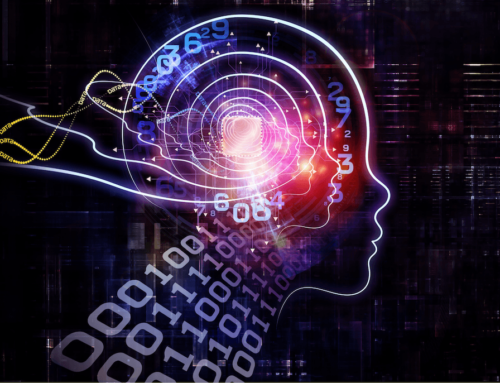A STUDENT TESTS OUT A GOOGLE EXPEDITION, TRANSPORTING HIM ON A “VIRTUAL FIELD TRIP.
Elementary uses virtual reality to do real learning
NEW BERLIN – Students at Ronald Reagan Elementary in New Berlin will get to explore a whole new (virtual) world this year, thanks to a new set of Virtual Reality headsets.
Through last year’s Boosterthon, glow run and help from the Parent and School Association, the school was able to purchase a full classroom group of VR headsets, which can be used to dive — visually — deeper into what students are learning about.
For those not familiar with virtual reality, imagine being plunged into a three-dimensional movie that feels like it surrounds you. When wearing the headset, you can turn your head and see things from different perspectives.
Students at Ronald Reagan Elementary got to pilot test a few sets last year, and now that the school has the resources to take the whole class on a virtual field trip, the possibilities are endless.
Virtual reality, real fun
“The ability for students to experience places and concepts within their classroom without actually leaving it makes this educational experience both valuable and engaging,” said digital learning coach Nichole Donahue.
Students love the ability to swim through coral reefs and explore the circulatory system inside the human body, places a normal school field trip could never take them. And even students as young as kindergarten can use the technology.
Ronald Reagan Elementary Principal Brady Reinke’s daughter, who was in kindergarten last year, got to try out the technology by virtually visiting a zoo, something that Reinke said she thoroughly enjoyed.
“(At the zoo), they were reaching out and trying to touch the animals,” Reinke described. “They get to see things not in a textbook or in a picture, but really it comes alive to them.”
In these virtual experiences, students do not go out “exploring” alone.
Students test out a Google Expedition, transporting them to a “virtual field trip.” (Photo: Submitted)
How it works
Donahue and others on the digital learning team have utilized Google Expeditions as a learning tool for the virtual reality headsets. They picked out a variety of expeditions that connected with the curriculum, which then teachers could guide their students through.
With the technology, teachers can direct students to different things to examine or move them through a specific area by tapping on an iPad. They can also tell which students are looking at what they should be looking at, and which aren’t.
“Google provides a nice path for teachers to guide students through based on the learning goals that they have,” said Reinke.
Teachers can also turn on a free explore mode, so students can venture wherever, for example, Ellis Island, that they please.
Real learning
Who cited several educational studies, students respond well to “computer assisted education” like this. It stimulates both learning and comprehension.
“Virtual reality technology can also lend itself to students with different needs and learning styles as VR encourages student exploration, multiple entry points to join the learning, and peer collaboration that otherwise may not be possible”
Though it’s impossible to anticipate what sorts of new opportunities virtual reality and similar technologies might bring to the classroom, the digital learning team at the School District of New Berlin anticipate that it will become more prevalent, though never completely replace traditional learning experiences.
“I see VR continuing to grow in education as its use becomes more prevalent in everyday life,” said Jennifer Schlie-Reed, another digital learning coach for the district. “For example, VR is currently used to train those in the medical field for situations they might encounter with their patients. The same problem solving and collaborative skills that VR supports for those training for a specific career are also skills that we want to support in their learning environment today as we prepare them to be college and career ready.”
